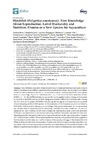Identificador persistente para citar o vincular este elemento:
https://accedacris.ulpgc.es/handle/10553/70082
| Campo DC | Valor | idioma |
|---|---|---|
| dc.contributor.author | Pérez, Evaristo | en_US |
| dc.contributor.author | Linares, Fátima | en_US |
| dc.contributor.author | Villanueva, José Luis Rodríguez | en_US |
| dc.contributor.author | Vilar, Antonio | en_US |
| dc.contributor.author | Mylonas, Constantinos C. | en_US |
| dc.contributor.author | Fakriadis, Ioannis | en_US |
| dc.contributor.author | Papadaki, Maria | en_US |
| dc.contributor.author | Papandroulakis, Nikos | en_US |
| dc.contributor.author | Papadakis, Ioannis | en_US |
| dc.contributor.author | Robles, Rocío | en_US |
| dc.contributor.author | Fauvel, Christian | en_US |
| dc.contributor.author | Roo, Javier | en_US |
| dc.contributor.author | Peleteiro, José Benito | en_US |
| dc.contributor.author | Lluch, Nuria | en_US |
| dc.contributor.author | Pazos, Gema | en_US |
| dc.contributor.author | Méndez, Belén | en_US |
| dc.contributor.author | Sigelaki, Irini | en_US |
| dc.contributor.author | Gómez, Castora | en_US |
| dc.contributor.author | Pérez, Montse | en_US |
| dc.contributor.author | Álvarez-Blázquez, Blanca | en_US |
| dc.date.accessioned | 2020-02-05T12:52:17Z | - |
| dc.date.available | 2020-02-05T12:52:17Z | - |
| dc.date.issued | 2019 | en_US |
| dc.identifier.issn | 2410-3888 | en_US |
| dc.identifier.other | Scopus | - |
| dc.identifier.uri | https://accedacris.ulpgc.es/handle/10553/70082 | - |
| dc.description.abstract | Four different wreckfish (Polyprion americanus) broodstock batches were maintained in research facilities under different photo and thermo-period conditions, one in Greece, the Helenic Center for Marine Research (HCMR, n = 3) and three in Spain: Instituto Español de Oceanografía (IEO, n = 13) in Vigo, Aquarium Finisterrae (MC2, n = 21) in A Coruña and Consellería do Mar (CMRM, n = 11). The CMRM includes two centers that work together: Instituto Galego de Formación en Acuicultura (IGAFA) and Centro de Investigacións Mariñas (CIMA), both in Pontevedra. During the five years of the project DIVERSIFY (Exploring the biological and socio-economic potential of new-emerging candidate fish species for the expansion of the European aquaculture industry, 2013–2018) works focused on the reproductive biology of the species, broodstock, and larvae nutrition and development of incubation and larval rearing protocols have been carried out. In terms of reproduction, catch methods of new wild animals, the reproductive cycle, sperm characteristics evaluation, and spontaneous and induced spawning methods have been described for wreckfish. Regarding nutrition, the positive effect of two types of enrichment on the fatty acid profiles of Artemia and rotifer has been verified. The relationship between the fatty acid profile of the diets supplied to the broodstock and the fatty acid profile obtained in the oocytes and eggs of the females fed with different diets, has also been demonstrated. Finally, early larval ontogeny has been described and incubation and larval rearing protocols have been proposed based on the results obtained in the different experiments of temperature, growth, survival, and larval feeding that were carried out. | en_US |
| dc.language | eng | en_US |
| dc.relation.ispartof | Fishes | en_US |
| dc.source | Fishes [ISSN 2410-3888],v. 4(1) | en_US |
| dc.subject | 251092 Acuicultura marina | en_US |
| dc.subject.other | Broodstock | en_US |
| dc.subject.other | Larval Husbandry | en_US |
| dc.subject.other | Lipid Profile | en_US |
| dc.subject.other | Live Prey | en_US |
| dc.subject.other | Natural Spawns | en_US |
| dc.subject.other | Nutrition | en_US |
| dc.subject.other | Ontogeny | en_US |
| dc.subject.other | Wreckfish | en_US |
| dc.title | Wreckfish (Polyprion americanus). new knowledge about reproduction, larval husbandry, and nutrition. promise as a new species for aquaculture | en_US |
| dc.type | info:eu-repo/semantics/article | en_US |
| dc.type | Article | en_US |
| dc.identifier.doi | 10.3390/fishes4010014 | en_US |
| dc.identifier.scopus | 85074350304 | - |
| dc.contributor.authorscopusid | 57211532689 | - |
| dc.contributor.authorscopusid | 6701533367 | - |
| dc.contributor.authorscopusid | 29567644100 | - |
| dc.contributor.authorscopusid | 22936389400 | - |
| dc.contributor.authorscopusid | 35502287000 | - |
| dc.contributor.authorscopusid | 57190191000 | - |
| dc.contributor.authorscopusid | 36444108400 | - |
| dc.contributor.authorscopusid | 6603190610 | - |
| dc.contributor.authorscopusid | 35778841300 | - |
| dc.contributor.authorscopusid | 57211539650 | - |
| dc.contributor.authorscopusid | 6603710932 | - |
| dc.contributor.authorscopusid | 22935309300 | - |
| dc.contributor.authorscopusid | 6602145413 | - |
| dc.contributor.authorscopusid | 56537025800 | - |
| dc.contributor.authorscopusid | 36466800300 | - |
| dc.contributor.authorscopusid | 57211535396 | - |
| dc.contributor.authorscopusid | 6503910483 | - |
| dc.contributor.authorscopusid | 7201698246 | - |
| dc.contributor.authorscopusid | 8413444100 | - |
| dc.contributor.authorscopusid | 6506703898 | - |
| dc.identifier.issue | 1 | - |
| dc.relation.volume | 4 | - |
| dc.investigacion | Ciencias | en_US |
| dc.type2 | Artículo | en_US |
| dc.utils.revision | Sí | en_US |
| dc.identifier.ulpgc | Sí | es |
| dc.description.sjr | 0,431 | |
| dc.description.sjrq | Q2 | |
| item.grantfulltext | open | - |
| item.fulltext | Con texto completo | - |
| crisitem.author.dept | GIR Grupo de Investigación en Acuicultura | - |
| crisitem.author.dept | IU de Investigación en Acuicultura Sostenible y Ec | - |
| crisitem.author.dept | Departamento de Biología | - |
| crisitem.author.orcid | 0000-0002-9660-230X | - |
| crisitem.author.parentorg | IU de Investigación en Acuicultura Sostenible y Ec | - |
| crisitem.author.fullName | Roo Filgueira, Francisco Javier | - |
| Colección: | Artículos | |
Citas SCOPUSTM
5
actualizado el 08-jun-2025
Citas de WEB OF SCIENCETM
Citations
5
actualizado el 08-jun-2025
Visitas
80
actualizado el 04-may-2024
Descargas
91
actualizado el 04-may-2024
Google ScholarTM
Verifica
Altmetric
Comparte
Exporta metadatos
Los elementos en ULPGC accedaCRIS están protegidos por derechos de autor con todos los derechos reservados, a menos que se indique lo contrario.
